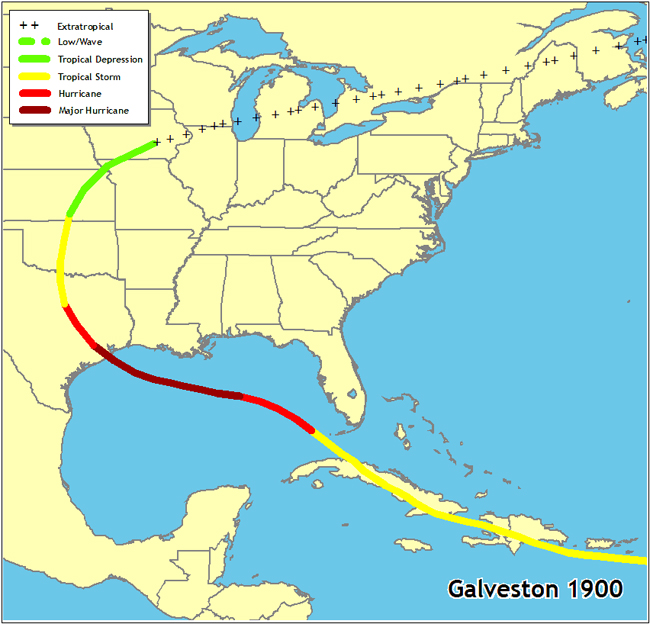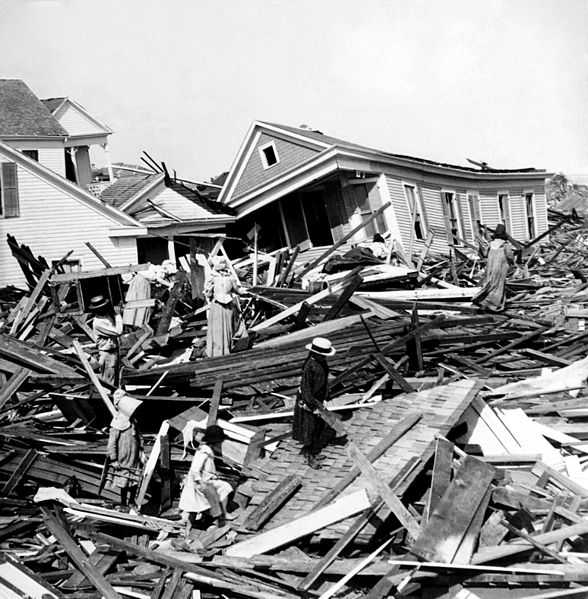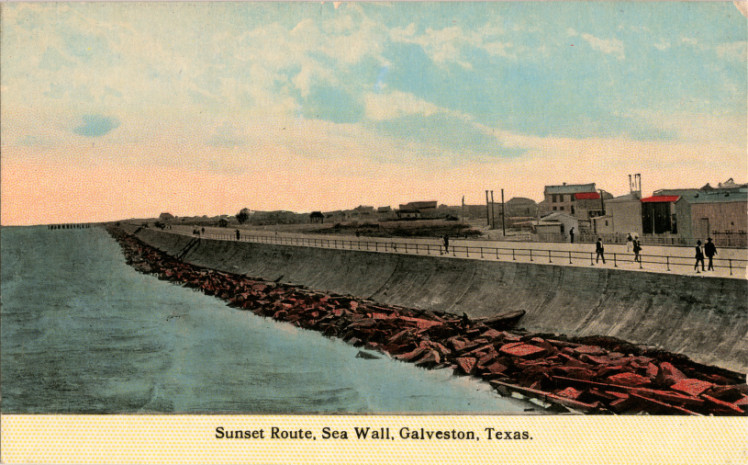On the night of September 8, 1900, winds were ravaging the prosperous harbor town of Galveston, TX. When the tempest finally subsided, residents were left picking up the pieces after the deadliest natural disaster in US history.
Galveston’s Beginnings
The city of Galveston lies on Galveston Island, a barrier island in the Gulf of Mexico, 40 miles south of Houston. The city thrived on the shipping trade during the 1800s, surpassing New Orleans to become the foremost cotton port in the world by the end of the century. During this time of shipping growth, nearly 40,000 people flocked to the 34 square mile island. With this growth, Galveston rivaled the size of nearby Houston.
The Great Galveston Hurricane

On September 4, 1900, the United States Weather Bureau, the precursor to the National Weather Service, received reports of a tropical system striking Cuba. A report from Key West the following day prompted the Bureau to assume the system was moving north toward Florida. Strong high pressure over the Southeast, however, pushed the storm west into the Gulf. This westward track allowed the storm to intensify in the warm Gulf waters. On September 7, Isaac Cline, chief meteorologist at the Galveston Weather Bureau, raised the hurricane flag atop the Bureau’s office after noticing heavy swells and northeasterly winds. Mr. Cline then took to the streets warning residents of an impending storm, telling them to move to higher ground.
The predictions from Mr. Cline and the Weather Bureau materialized on September 8, 1900 as the sea began to rise, and winds ramped to over 100 mph. The warning for residents to move to higher ground on the island wouldn’t be enough in this storm. Lying on a barrier island, Galveston’s highest point was only 8′ above sea level. During the heart of the Category 4 hurricane, storm surge brought Gulf waters 15′ above sea level. Additionally winds raging to 130mph created projectiles out of any object that may have become unsecured during the flooding.
This combination of extreme winds and high water levels proved catastrophic for the city. 3,500 homes were destroyed and 8,000 people lost their lives, making this hurricane the deadliest in US history. In total, the storm caused an estimated $20 million in damages, or $700 million in today’s dollars.
Aftermath

After the storm, residents were left to rebuild their leveled city. The city’s port that had exported $84 million in goods had been leveled, as had the houses of the longshoremen that worked it. Even though Galveston rebuilt the port, it never returned to the same level of activity. A deep water channel to Houston became more favorable for trade in part due to its shelter from hurricanes and the rising seas that laid waste to Galveston.
To make sure that storm surge never overtook the city again, Galveston took on a major feat in civil engineering. A massive 17 foot tall sea wall was constructed to keep water out of the city. Additionally, the city dredged sand from its ship channel, raising the entire city by an average of eight feet. In 1915 another Category 4 hurricane tested these preparations, but this time the sea wall and elevation changes kept damages at bay. In the following years, the city emerged as a tourist destination for the western Gulf, and remains an example of perseverance following unfathomable destruction.
